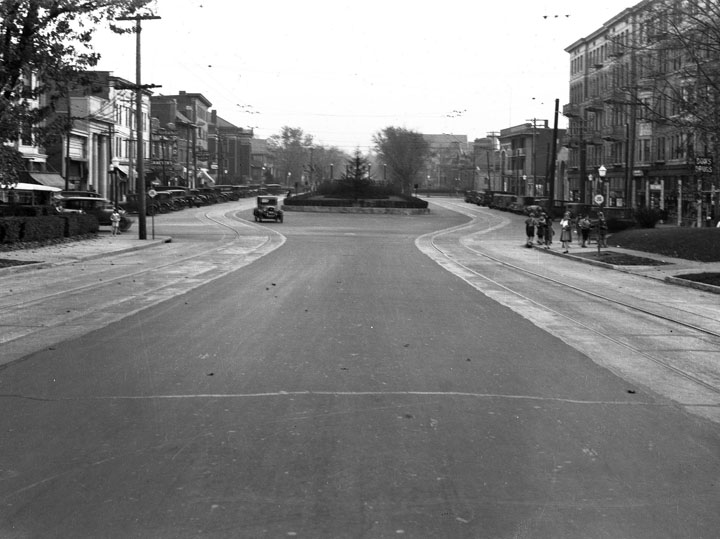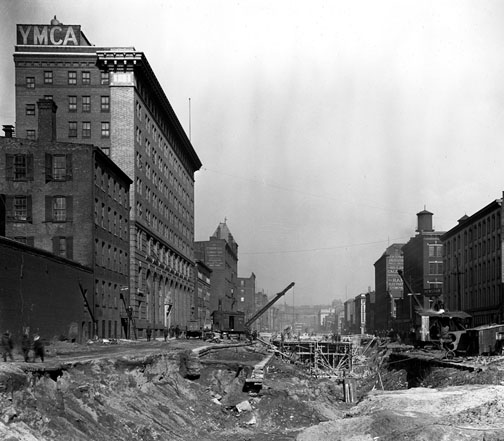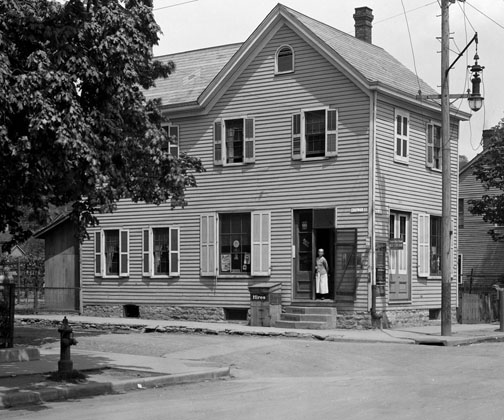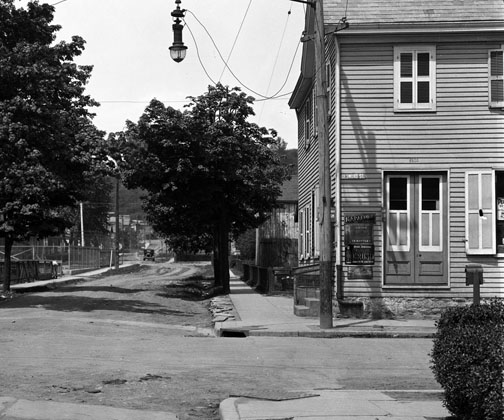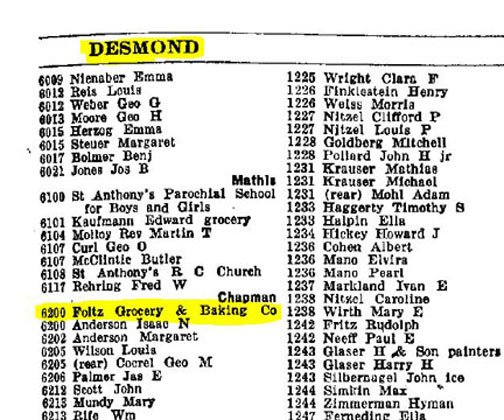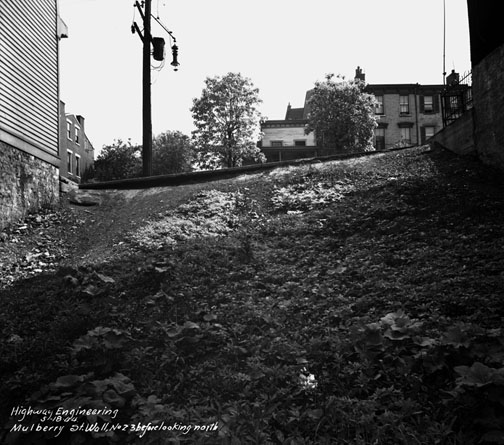By: Angela Vanderbilt
The proposed subway route crossed through several neighborhoods north and west of downtown Cincinnati, as did the street improvement projects of the 1920s – 1950s. Whether the project involved razing a bridge over the canal to make room for bulldozers or digging trenches to lay new sewer lines before paving streets, the photographers captured these streets and neighborhoods in their images, and noted the location in the majority of photographs.
As mentioned in the blog “A Changing Landscape”, negatives of the subway project have date and location information written along the outer edge. When printed, this information is not visible. But later photographs, and the majority of street improvement photographs, have this information directly within the frame of the image, which was made visible when printed. Generally located in the lower left corner, this information provides the viewer with a quick and easy point of reference.
In some cases, no information was provided on the negative at all. However, it may still be possible to identify the location by using the information contained within the image itself. A street sign may be included in the scene, either on a post or written on the side of a building. Streets or neighborhoods may be identified by buildings, intersections or some type of neighborhood landmark. Or there may be a similar photograph of the same location for which the photographer has provided the location.
The image below is easily recognizable to Hyde Park residents, despite the lack of caption information provided on the first image. In the next image, the photographer wrote the location on the negative, “Erie Ave. east from about 100’ west of Edwards Rd.”, which confirms the location to be Hyde Park Square.
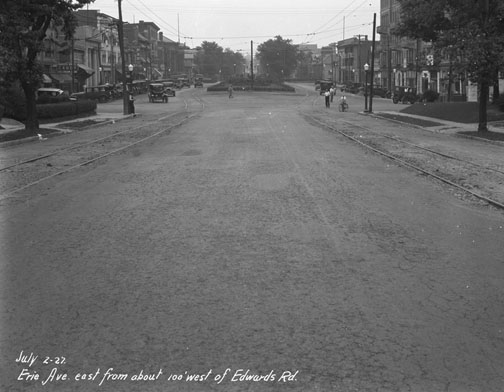 In the image below, the reference “East from Plum at Canal Elbow” is written on the outer edge of negative. This indicates the image was taken at the Plum Street curve, facing east down the canal bed (what is now Central Parkway). The YMCA building is on the left in the foreground, the same building which stands today, providing an additional visual reference to plot the location.
In the image below, the reference “East from Plum at Canal Elbow” is written on the outer edge of negative. This indicates the image was taken at the Plum Street curve, facing east down the canal bed (what is now Central Parkway). The YMCA building is on the left in the foreground, the same building which stands today, providing an additional visual reference to plot the location.
If a business name is written on a building, it might be possible to identify the location by looking that business up in the Williams’ Cincinnati Street Directory, now available online through the Cincinnati Public Library. The location of the image below was determined by looking up the name of the business, “Gus Hermes Grocery”, painted on the window in the 1920 Williams’ Directory. The entry under the surname “Hermes” on page 926 indicates “August grocery 310 14th”, or August Hermes Grocery located at 310 14th Street.
In the following set of images, no information was written on the negatives. However, street signs are attached to the sides of the building. In the first image, the sign facing the camera is legible and reads “Chapman St.”, but the cross-street sign is at an angle, and illegible. The second image is of the same building, taken from the cross-street, and the sign is clearly legible, reading “Desmond St.” with the address “6200” above the doors. A quick look in the 1927 Williams’ Cincinnati Directory and we find that the Foltz Grocery and Baking Co. was located at this address.
In many cases, no discernable information is given, and the location cannot be identified based on the content of the image. For instance, had the photographer not written the street name on the image below, it would be nearly impossible to identify its location based on the angle from which the photo was taken.
As an added feature to the online collection, the latitude and longitude for those images with identifiable street names and addresses will be plotted, and these GeoCoordinates will be used to generate a Google map of the subway route and street improvements around Cincinnati. Stay tuned for more on this project in future blog posts!
 This project is funded by a grant for $60,669 through the Library Services and Technology Act, administered by the State Library of Ohio.
This project is funded by a grant for $60,669 through the Library Services and Technology Act, administered by the State Library of Ohio.

